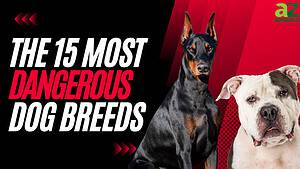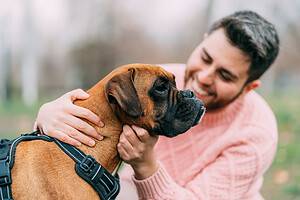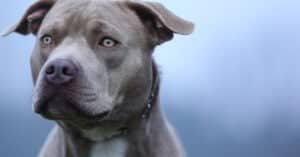The place of origin for the miniature Australian shepherd is Basque. Basque is between Spain and France, where excellent herding dogs are required. The miniature versions of the Australian Shepherd have all of the energy, good looks, and intelligence that herd dogs require.
During the 1960s in California, Australian Shepherd breeders began to breed the smallest animals together, and the result was the miniature Australian Shepherds.
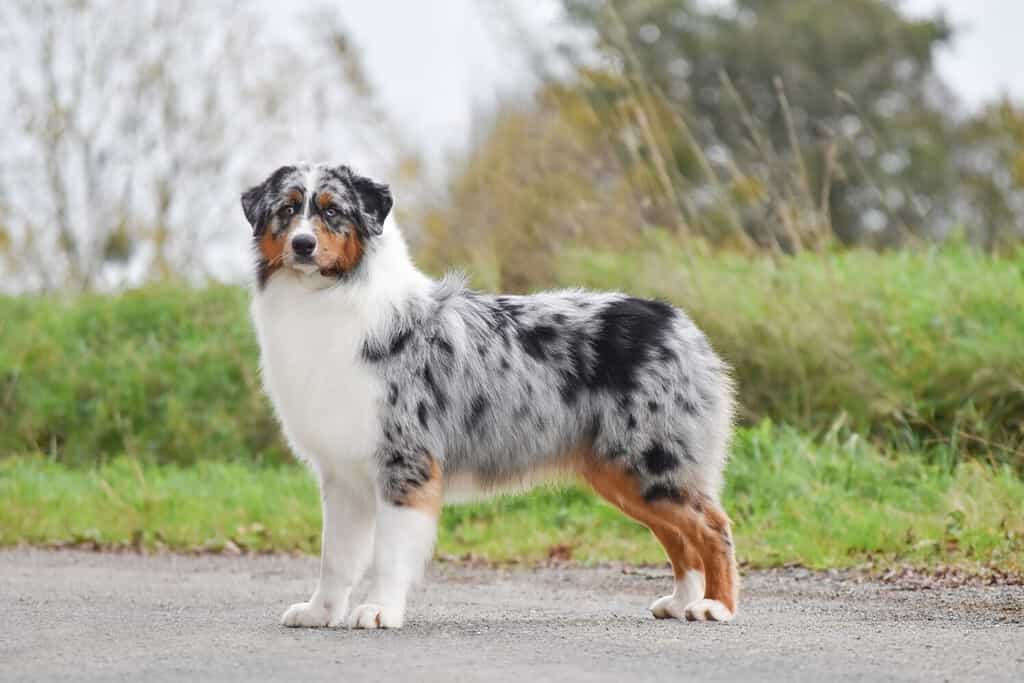
Miniature Australian Shepherds have all of the energy, good looks, and intelligence that herd dogs require.
©Hanna Borysenko/Shutterstock.com
Names: The Miniature Australian Shepherd Breed is Called
- Mini Aussie
- Mini American Shepherds
- North American Miniature Australian Shepherds
- Teacup Australian Shepherds
Miniature Australian Shepherd Characteristics
Appearance
- Medium-length hair that may be wavy or straight.
- The hair is feathered at the back of the legs.
- They have a mane around the neck.
- Colors vary from blue to red merle and black tricolor. All colors will have a white or tan marking at the tips.
- There is no white framing around their eyes.
- Hindquarters and forequarters are equal in length.
- Oval, compact feet.
Personality Traits
- Easygoing
- Courageous
- Loyal
- Affectionate
- Agile
- Attentive
- They do not like to be left alone.
- Intelligent
- Easy to work with.
- Herding is an instinct. It does not need to be taught.
Growth and Weight Chart by Age
| Age | Male | Female |
| Birth | 0.5 lbs. | 0.5 lbs. |
| 1 Month | 3 lbs. | 3 lbs. |
| 6 Weeks | 7 lbs. | 5 lbs. |
| 2 Months | 9 lbs. | 7 lbs. |
| 3 Months | 12 lbs. | 9 lbs. |
| 4 Months | 14 lbs. | 11 lbs. |
| 5 Months | 17 lbs. | 14 lbs. |
| 6 Months | 19 lbs. | 17 lbs. |
| 7 Months | 21 lbs. | 19 lbs. |
| 8 Months | 22 lbs. | 21 lbs. |
| 9 Months | 23 lbs. | 21 lbs. |
| 10 Months | 24 lbs. | 23 lbs. |
| 11 Months | 25 lbs. | 20 lbs. |
| 12 Months | 27 lbs. | 25 lbs. |
| 2 Years | 40 lbs | 35 lbs. |
When Will My Miniature Australian Shepherd Stop Growing?
Full-size Australian shepherds grow until they are 16 months old. The miniature Australian shepherd will stop growing between 9 and 12 months of age. Smaller breeds of animals mature quicker than their larger counterparts.
How Big Will My Miniature Australian Shepherd Be When It’s Fully Grown?
| Gender | Height | Weight |
| Females | 13 to 17 inches | 20 to 40 pounds |
| Males | 14 to 18 inches | 20 to 50 pounds |
The Biggest Miniature Australian Shepherd Ever Recorded
A miniature Australian Shepherd in Texas weighed 65 pounds and stood 18 inches at the shoulder. This larger-than-average animal was overweight and not exercising enough.
Veterinarians advise against feeding our pets more than the recommended amounts of food for their age and breed. If a puppy is fed the recommended amount of food, they will grow within the parameters of their breed. Puppies fed more than the recommended amount grow larger or become heavier than they should. Puppies fed less than the recommended amount are smaller and weigh less because of a lack of nutrition.
When Should My Miniature Australian Shepherd Be Spayed or Neutered?
Toys and small-breed dogs should be spayed at 6 to 9 months.
When Should My Miniature Australian Shepherd Be House Broken?
Your training goal is to have a completely housebroken pet by the time they are four to six months old. However, a lot of factors influence or delay potty training.
Start your basic potty training when you bring your new puppy home. To do this, you need to have established a potty training plan and have gotten all of the supplies you need. The main supply you need is a crate.
Using a crate to accelerate the potty training process is a good idea. Dogs avoid using the bathroom close to their bed. If they are in the crate at night to sleep and when you are away from home, they will practice controlling their urges until you release them.
When Should I Stop Feeding Puppy Food?
According to the American Kennel Club (AKC), small-breed dogs, such as the miniature Australian Shepherd, will switch from puppy to adult food when they are seven to nine months old. However, keeping the animal on the puppy’s food regimen longer is better than switching too early.
When you switch to adult kibble, the feeding amounts and frequencies should also be changed.
| Age | Feeding Frequency |
| 3 to 6 months | Two times per day |
| 6 to 12 months | 2 times per day |
| 1 year | once a day |
When Will My Puppy Start Losing Teeth?
| Age | What is happening with their teeth? |
| 3 weeks | Puppies begin teething. |
| 6 weeks | They have their deciduous teeth (milk teeth). Front incisors and canine teeth come in first, then their premolars emerge. |
| 12 weeks | Puppies start to lose their milk teeth. |
| Six months | Milk teeth are all lost, and permanent teeth have emerged. |
When Should I Start Training My New Puppy?
Begin training your new puppy the first day that you bring them home.
What Cues Should I Teach First?
Start training your miniature Australian shepherd by teaching them basic commands first. Once they master the basic commands, expand their training to include new cues while practicing the older commands.
Training Tips
- Teach the dog its name first.
- Sitting is a primary cue.
- Down is a basic command.
- Leash training is an essential skill.
Positive reinforcement is a more effective training method than negative training.
- Remain calm while training, and speak in your normal voice. Do not yell.
- Be consistent. Use the same words and instructions each time.
- Keep training lessons to just a few minutes each day. However, make sure to do some training every day.
- Reward with pets, praise, and small treats.
When Will My Puppy Calm Down?
The miniature Australian shepherd puppy is full of life, which makes them active. They jump, run, and do everything at breakneck speeds. Miniature Australian Shepherd puppies are full of energy. Like other small-breed dogs, these animals will settle down between two and three years of age.
Owners will notice that their miniature Australian shepherd is calmer and less hyper each year. However, these animals stay active and exuberant for their entire lives.
Common Health Issues Your Miniature Australian Shepherd Might Experience
Different dog breeds experience different health issues. Preparing for the typical health concerns your dog may experience will prepare you and your veterinarian to take preventive measures. Everyday health issues your miniature Australian Shepherd may experience include:
- Anxiety and phobias. A dog with anxiety may act aggressively or be destructive. They are restless and often have bathroom accidents indoors.
- Hip dysplasia happens when the puppy does not grow ideally, so their hip joint does not fit right in the socket.
- Skin problems like allergies, infections, excessive scratching, and hair loss are common. Ringworm and mange can lead to infections due to excessive scratching at one site.
- Vision problems like cataracts. Yearly eye exams will prevent severe complications from going unnoticed.
- Epilepsy is a concern before the age of three. You can rest easy after the dog reaches three years old and has no seizure disorder.
Pictures of Miniature Australian Shepherd Puppies
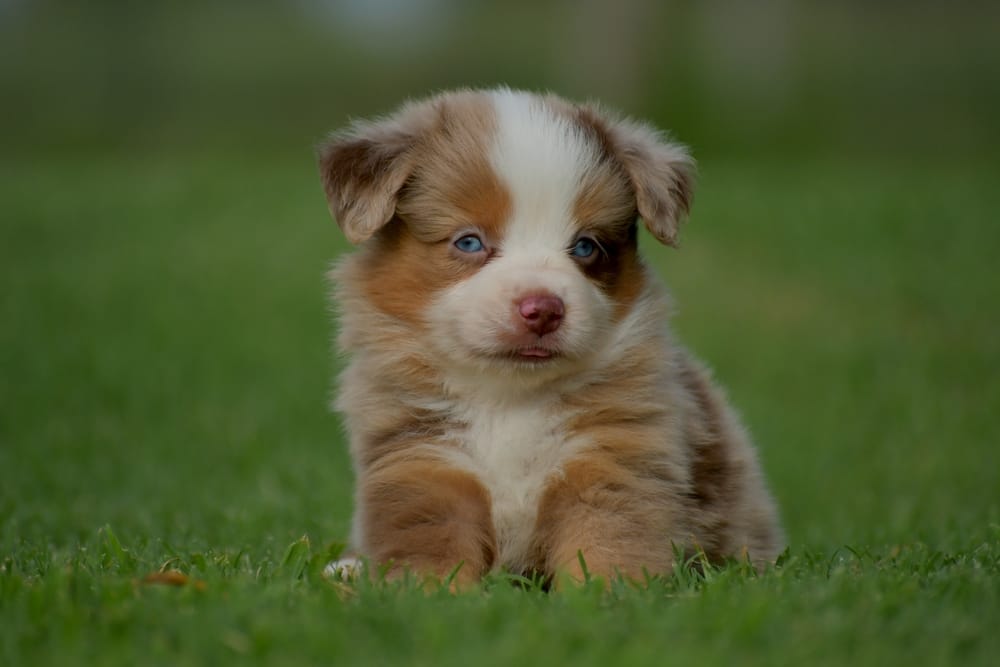
Six- to ten-week-old puppy.
©Elizabeth Casanova/Shutterstock.com
Pictures of Miniature Australian Shepherd at 6 Months
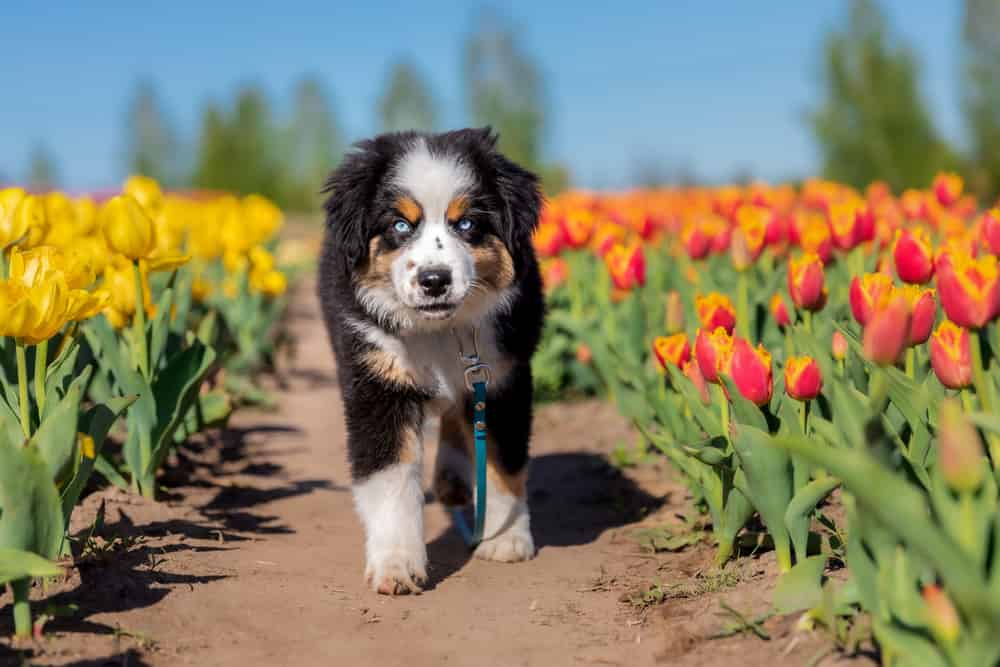
Six-month-old puppy.
©OlgaOvcharenko/Shutterstock.com
Pictures of Fully Grown Miniature Australian Shepherd
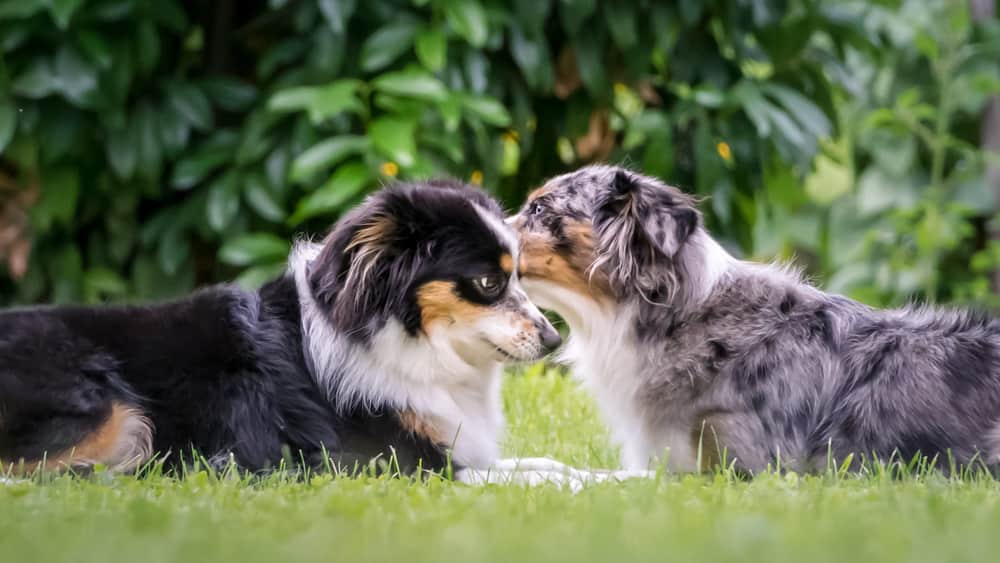
Adult miniature Australian shepherds
©Helen Rose Gabriel/Shutterstock.com
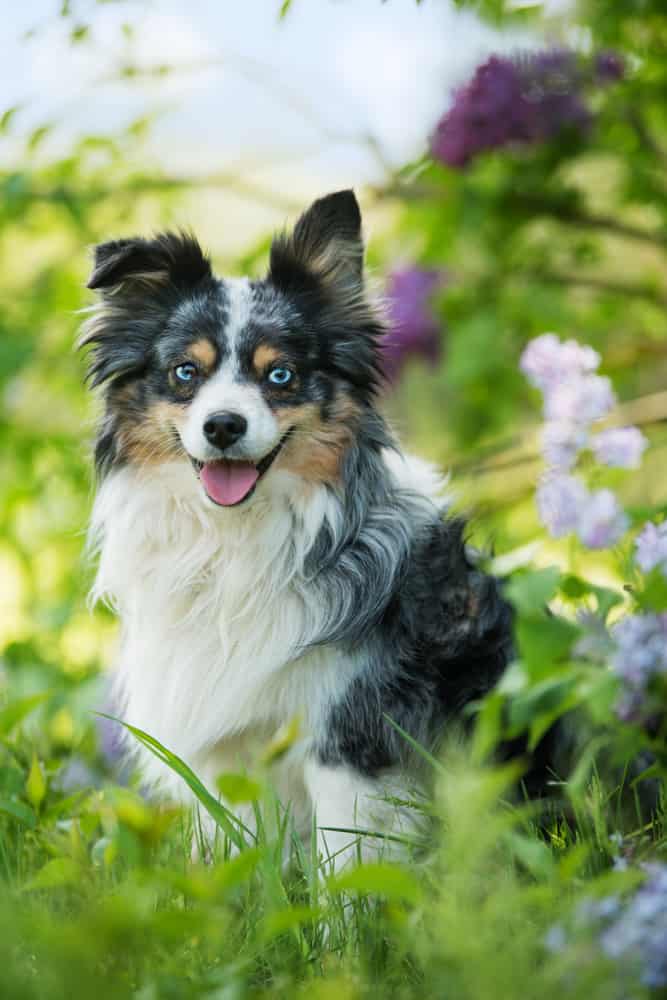
One-year-old dog.
©Dora Zett/Shutterstock.com
Dog Breeds That Are Similar to the Miniature Australian Shepherd
Eurasier
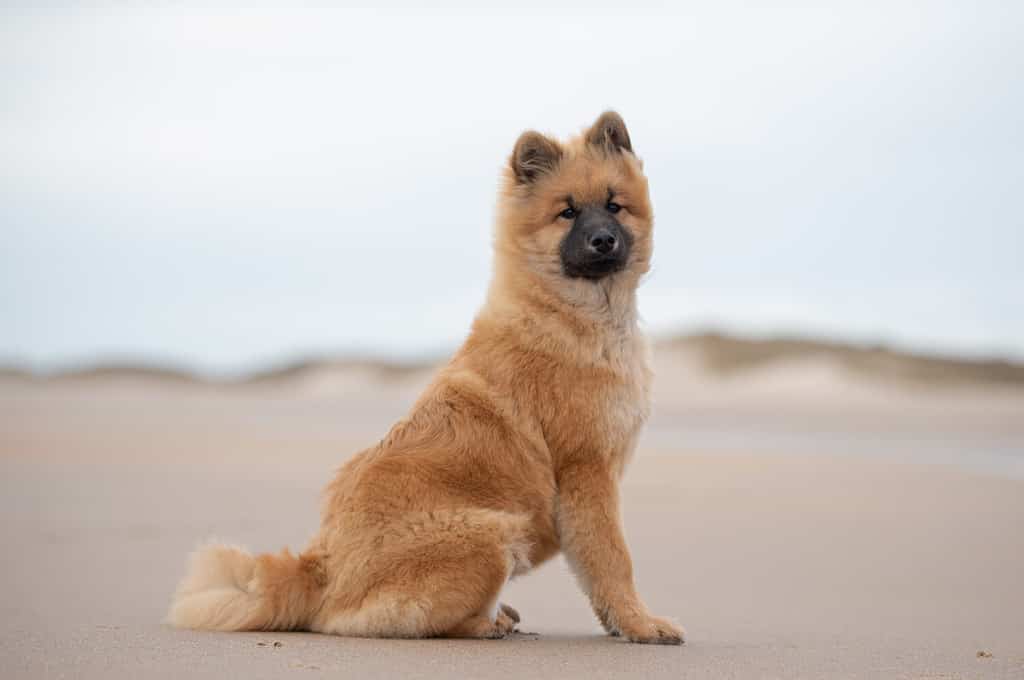
The Eurasier breed has personality characteristics like the miniature Australian Shepherd.
©rebeccaashworthearle/Shutterstock.com
A Eurasier is an active, intelligent dog with high energy levels. Like the miniature Australian shepherd, the Eurasier is loyal, friendly, and good with children, and both breeds have boredom issues and require mental stimulation and physical activity daily. Both breeds are similar in size and weight. The Eurasier is a dog with a double coat that can tolerate cold temperatures. They come in many colors and make great family pets.
Groenendael (Belgian Shepherd)
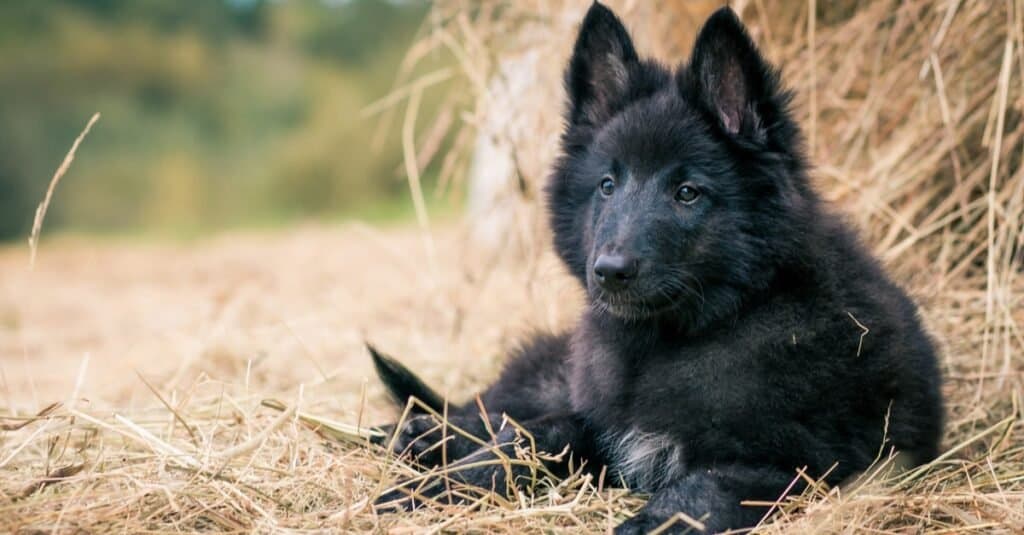
A Groenendael is similar to a miniature Australian shepherd in size, temperament, affection, and energy.
©Eve Photography/Shutterstock.com
The Belgian shepherd breed is similar to the miniature Australian shepherd in size, temperament, affection, and energy. Both breeds need daily physical activity to burn off excess energy. Both breeds are intelligent, easy to train, and similar in size. They both require medium maintenance compared to other coats and crave companionship. When left alone, they can become anxious over being separated. Belgian shepherds make excellent herd dogs and great family pets. They are alert and good with children. The Groenendael can become aggressive when protecting a herd or their family.
The photo featured at the top of this post is © ChocoPie/Shutterstock.com
Ready to discover the top 10 cutest dog breeds in the entire world?
How about the fastest dogs, the largest dogs and those that are -- quite frankly -- just the kindest dogs on the planet? Each day, AZ Animals sends out lists just like this to our thousands of email subscribers. And the best part? It's FREE. Join today by entering your email below.
Thank you for reading! Have some feedback for us? Contact the AZ Animals editorial team.



